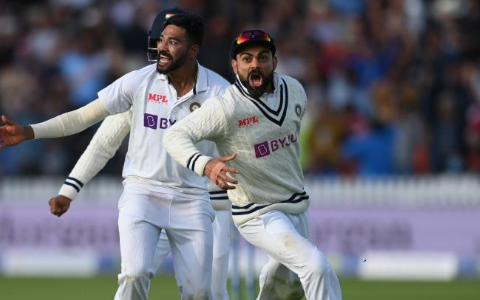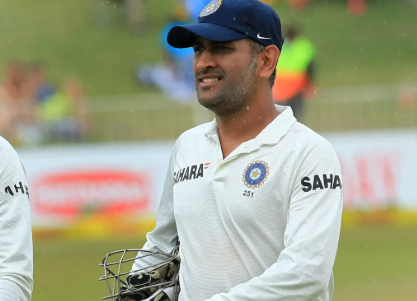Essential Tips for Beginners Learning to Play Cricket
For beginners learning to play cricket, mastering the foundational skills is crucial. This includes understanding grip, stance, and footwork, which are vital for effective batting and bowling. Selecting the right equipment, such as a suitable bat and protective gear, enhances comfort and safety on the field. Furthermore, developing mental resilience and a positive attitude is essential for improvement. With the right approach, players can unlock their potential and elevate their game. What comes next is equally important.
Understanding the Basics of Cricket
Cricket, often referred to as a sport of strategy and skill, requires players to grasp its fundamental components to enjoy and excel in the game. Understanding cricket history is essential, as it provides context and appreciation for the sport’s evolution.
Players should familiarize themselves with the basic rules, such as batting, bowling, and fielding, as well as the various formats, including Test, One Day, and T20 matches. Developing a solid game strategy is crucial; this includes knowing when to attack or defend, as well as mastering teamwork and communication on the field.
Choosing the Right Equipment
Selecting appropriate equipment is a vital step in enhancing a beginner’s cricket experience. For bat selection, individuals should consider their height and strength, opting for a bat that feels comfortable and balanced. A well-fitted bat can significantly impact performance, so trying various types is encouraged.
Additionally, protective gear is essential for safety during play. Beginners should invest in a quality helmet, pads, and gloves to minimize the risk of injury. Each piece of protective gear should be chosen for comfort and fit, allowing the player to move freely and confidently.
Mastering Your Grip and Stance
A solid foundation in cricket hinges on mastering grip and stance, two fundamental components that significantly influence a player’s performance.
Players should explore various grip variations, such as the full grip for batting or the seam grip for bowling, allowing for better control and precision. To find the most comfortable grip, players are encouraged to practice and adjust until achieving a natural feel.
Equally important are stance adjustments, which help players maintain balance and readiness. A proper stance involves feet shoulder-width apart and knees slightly bent, promoting agility.
Players should experiment with their stance to determine what feels most stable and comfortable, enabling them to respond effectively to different deliveries. Mastering these elements empowers players to express their cricketing potential freely.
Learning the Rules of the Game
Understanding the rules of cricket is essential for players looking to enhance their game and enjoy it fully. Familiarity with the fundamental regulations allows players to navigate the game confidently.
Beginners should pay attention to umpire signals, which communicate decisions that affect gameplay, such as boundaries or dismissals. Mastering these signals helps players understand the flow of the match.
Additionally, adhering to game etiquette is crucial; respecting opponents and officials fosters a positive playing environment. This includes acknowledging good plays and following the spirit of the game.
Practicing Batting Techniques
In mastering cricket batting, beginners should focus on their grip and stance, as these are foundational to effective play.
A proper grip allows for better control of the bat, while an ideal stance positions the player to react swiftly to the ball.
Additionally, practicing footwork fundamentals enhances a player’s ability to position themselves correctly for a successful shot.
Grip and Stance
Mastering the grip and stance is essential for any aspiring cricketer looking to develop solid batting techniques. A proper batting grip involves holding the bat with fingers wrapped around the handle, ensuring comfort and control while maintaining a relaxed hold. The top hand should be firm yet flexible, while the bottom hand provides stability.
Equally important is the stance adjustment; players should stand with feet shoulder-width apart, knees slightly bent, and weight evenly distributed. This position allows for balance and readiness to respond to the ball.
Practicing these fundamentals consistently builds confidence and sets the foundation for effective batting. Remember, a solid grip and stance can significantly enhance a player’s performance, making them feel empowered at the crease.
Footwork Fundamentals
As players refine their batting skills, effective footwork becomes crucial for responding to various types of deliveries. Mastering footwork fundamentals allows players to position themselves optimally, enhancing their ability to play both front-foot and back-foot shots.
Incorporating specific footwork drills, such as shadow batting and cone drills, can significantly improve lateral movement and agility. Players should focus on maintaining a balanced stance while practicing these drills, ensuring quick, deliberate steps toward the ball.
Additionally, practicing foot placement and weight transfer will help in executing powerful, accurate shots. Emphasizing these techniques not only builds confidence but also fosters a deeper connection with the game, allowing players the freedom to express their skills on the field.
Developing Bowling Skills
Bowling in cricket requires a blend of technique, precision, and practice to effectively deliver the ball and outsmart the batsman.
Beginners should focus on mastering basic bowling techniques, starting with a comfortable grip and a smooth run-up. Consistent practice helps develop accuracy, while understanding spin variations can enhance effectiveness.
Bowlers should experiment with different deliveries, such as off-spin and leg-spin, to keep batsmen guessing. It is crucial to maintain a balanced follow-through to ensure control and prevent injury.
Additionally, observing experienced bowlers can provide insights into varied styles and strategies. With dedication and consistent practice, beginners can refine their skills, gaining confidence and freedom in their bowling approach.
Familiarizing Yourself With Field Positions
Understanding field positions is essential for any beginner in cricket, as each position plays a vital role in the game.
Players should familiarize themselves with key fielding positions to support the bowler’s strategy and effectively respond to the batsman’s actions.
Key Fielding Positions
Fielding positions in cricket are crucial to a team’s defensive strategy and can significantly impact the outcome of a match. Beginners should familiarize themselves with key positions, such as slip, gully, and point, each serving unique roles in catching and stopping runs.
Understanding catching techniques is vital for effective fielding; practicing these techniques during fielding drills will enhance coordination and confidence on the field. The wicketkeeper stands behind the stumps, ready to catch or stump out batsmen, while fielders in the inner circle focus on quick stops and returns.
Outside the circle, positions like deep mid-wicket and long-off are essential for boundary protection. Mastering these roles allows players to contribute effectively, fostering a sense of freedom and teamwork.
Bowler and Batsman Roles
While it may seem straightforward, the dynamic relationship between bowlers and batsmen is fundamental to cricket, requiring a solid grasp of each role’s responsibilities.
Bowlers employ various strategies to outwit batsmen, including varying their pace, length, and swing. Understanding the field positions is crucial, as it influences how a bowler approaches each delivery.
On the other hand, batsmen must utilize effective techniques to defend their wicket or score runs, adapting to the bowler’s strategies. They need to read the game, positioning themselves accordingly, whether it be for a defensive block or an aggressive shot.
Tips for Improving Your Game and Staying Motivated
How can budding cricketers enhance their skills and maintain enthusiasm for the game?
To improve, they should focus on goal setting, establishing both short-term and long-term objectives. This structured approach helps track progress and instills a sense of achievement.
Additionally, fostering mental resilience is crucial; players should learn to accept failures as part of the journey, using setbacks as opportunities for growth.
Regular practice, combined with constructive feedback from coaches or peers, can further refine skills.
Staying engaged with the sport by watching matches, studying techniques, or joining community discussions can also boost motivation.
Ultimately, embracing the joy of cricket, along with a commitment to self-improvement, creates a fulfilling and enduring passion for the game.
Conclusion
In conclusion, beginners embarking on their cricket journey should embrace the essential elements of skill and strategy. By prioritizing practice, perfecting posture, and pursuing progress, players can transform their gameplay. With determination and dedication, the thrill of the pitch can turn into triumph. Remember, every confident cricketing conqueror started as a novice, navigating the nuances of the game. So, stay spirited, seek support, and savor the sweet success that comes with consistent commitment and camaraderie.





